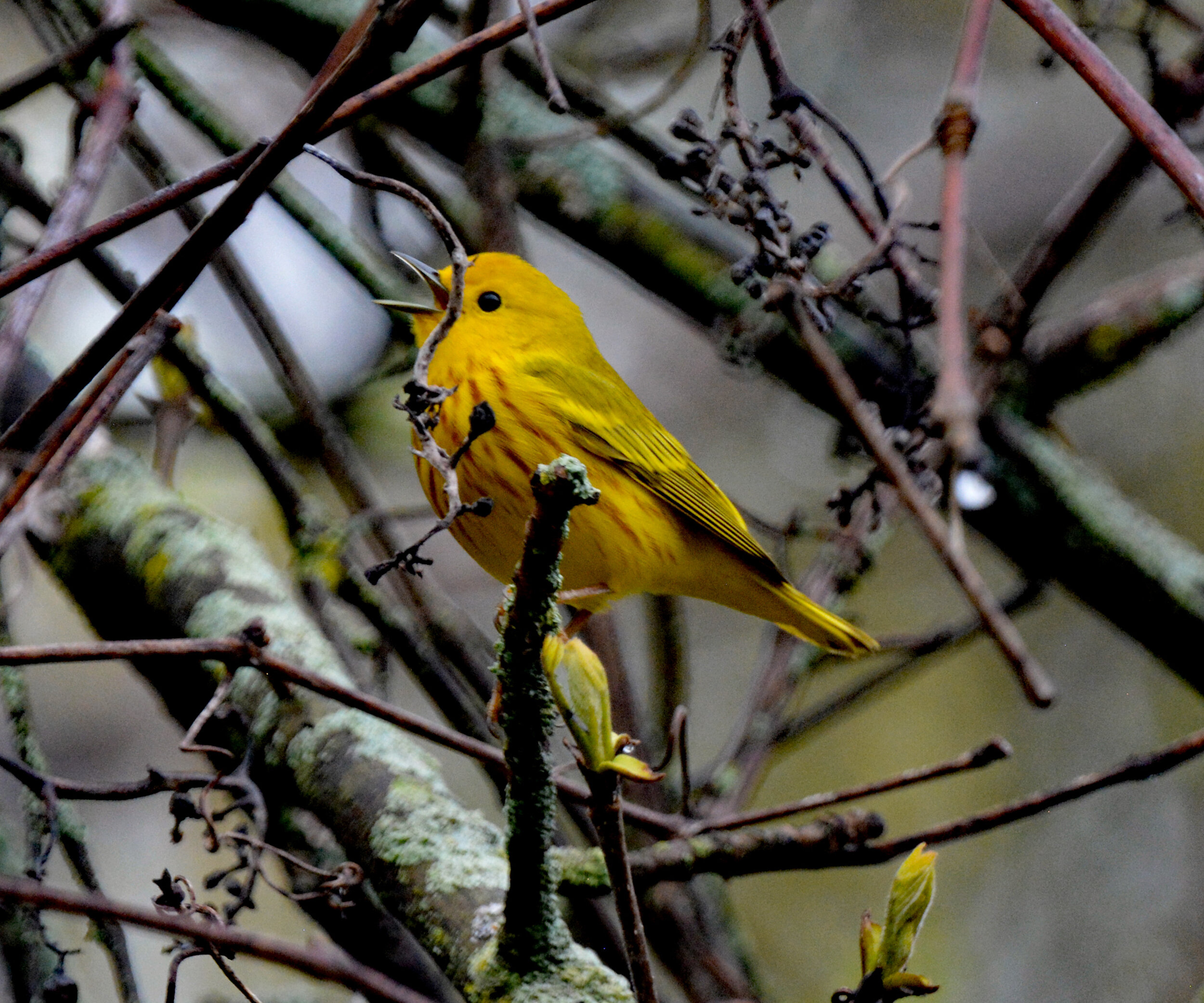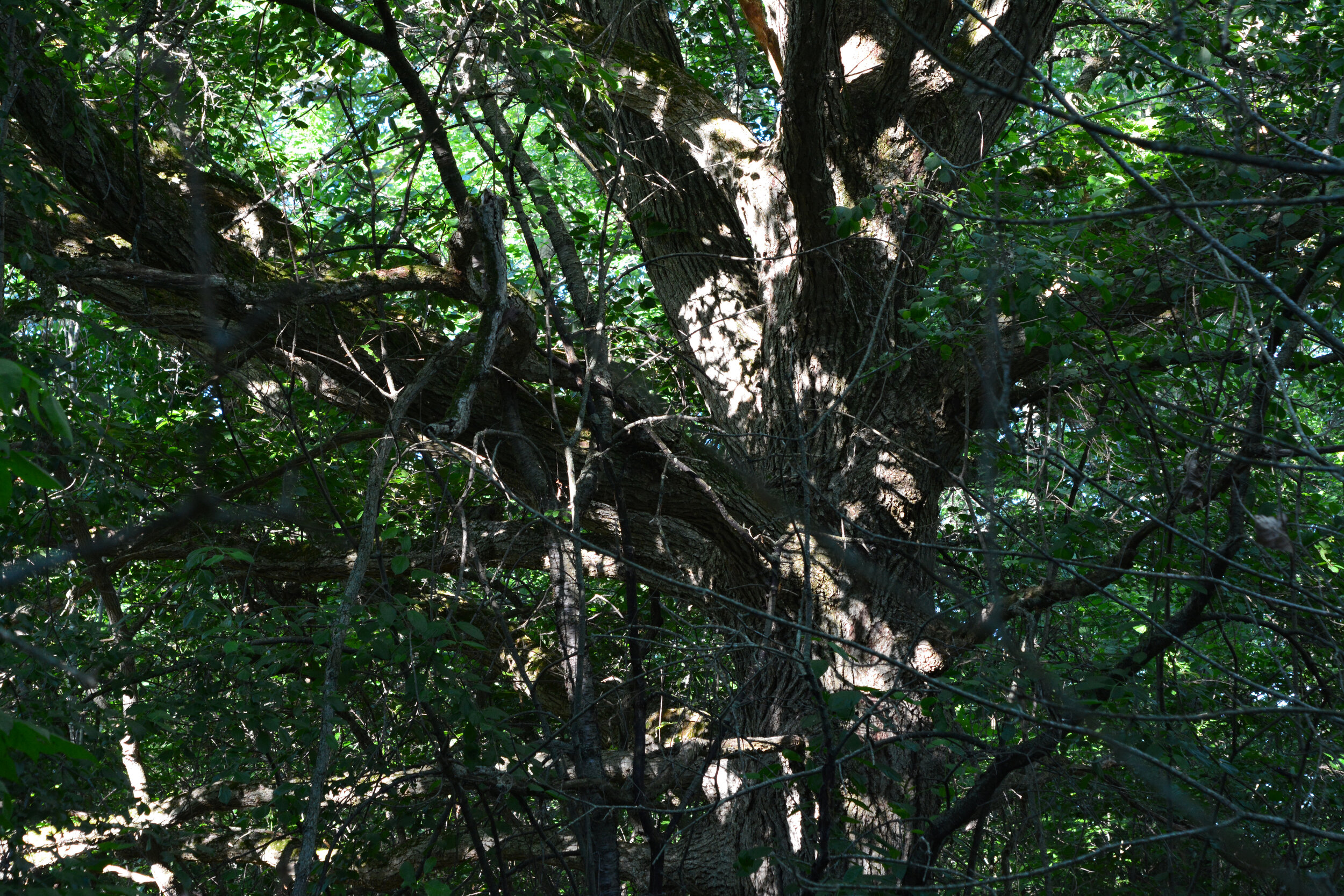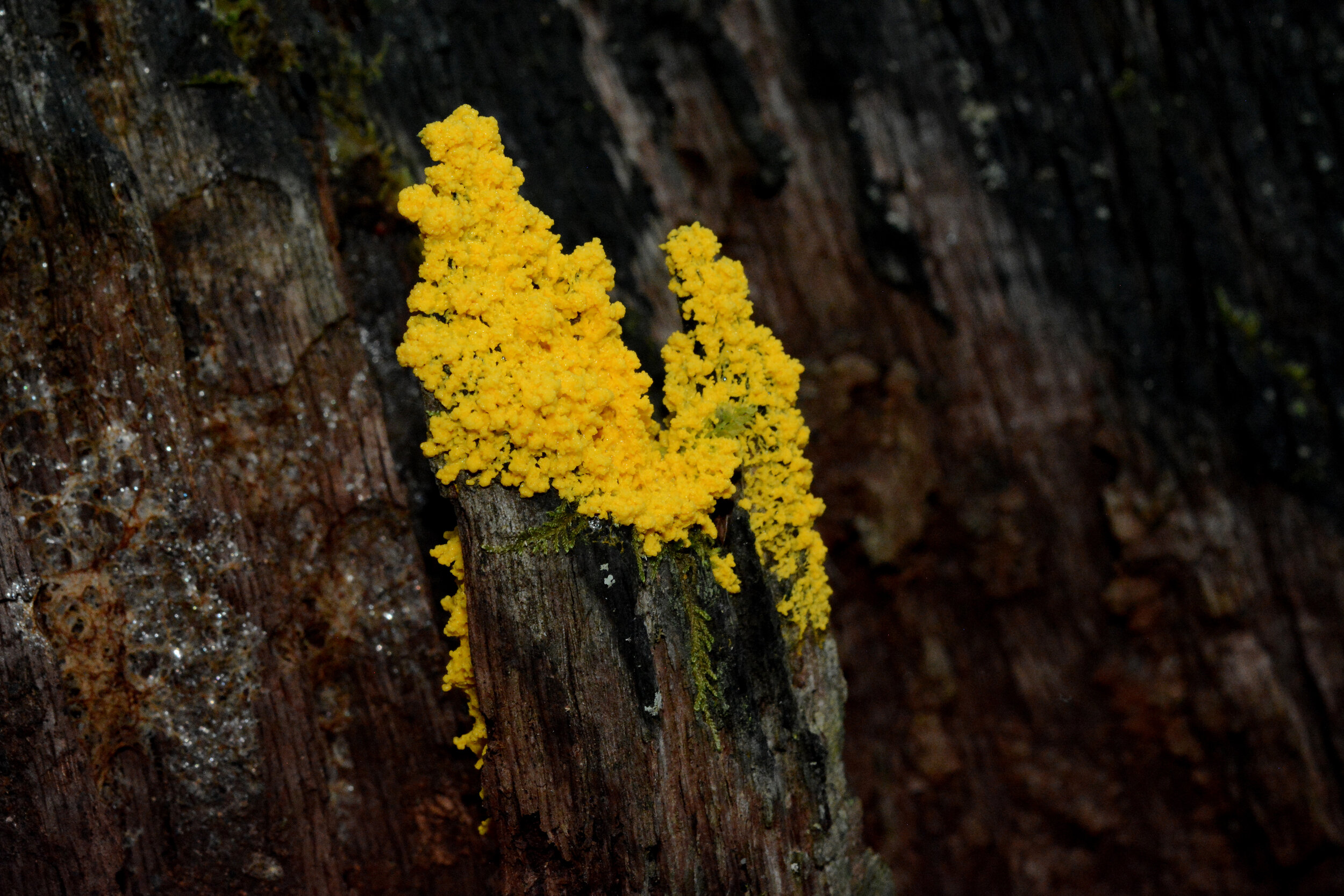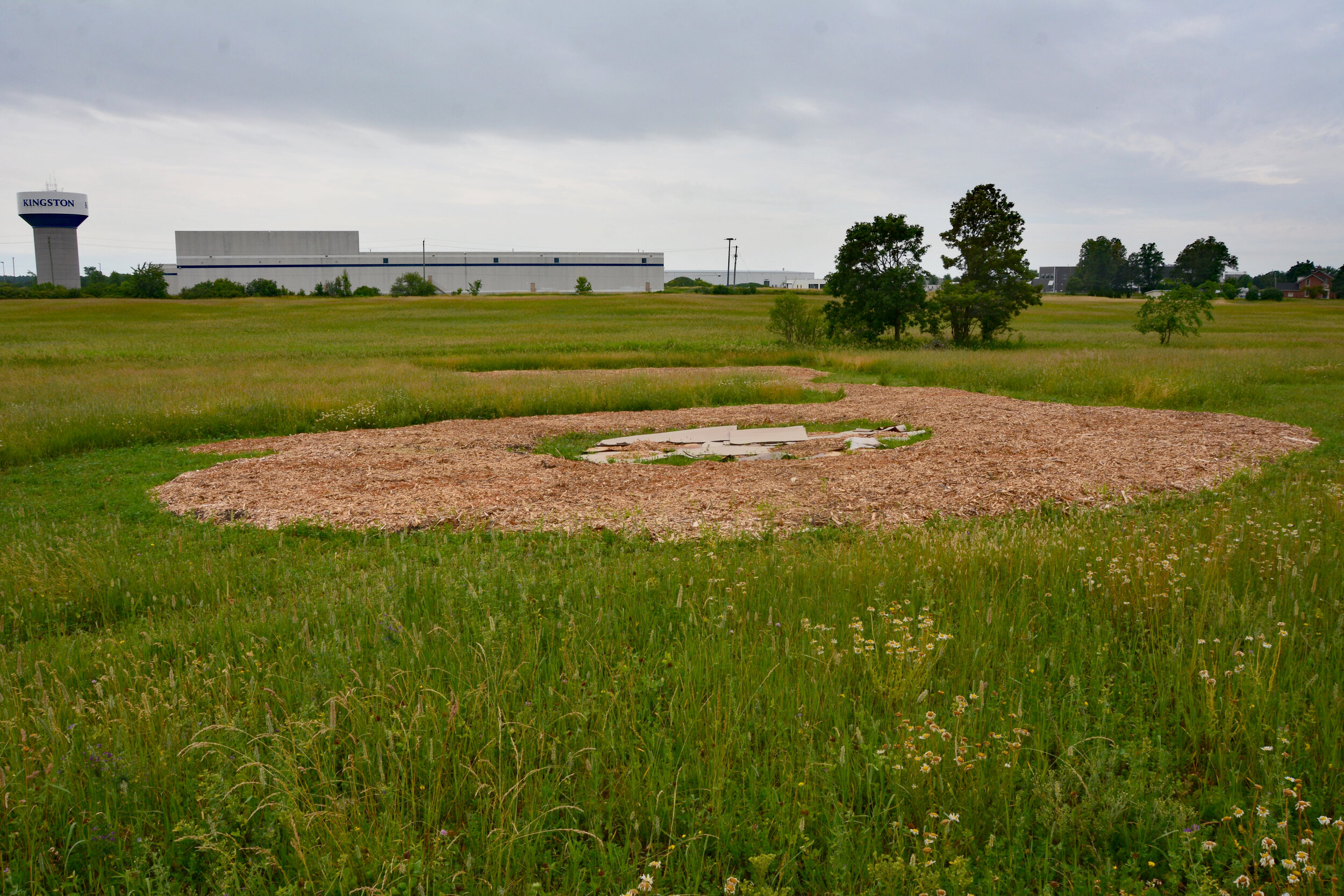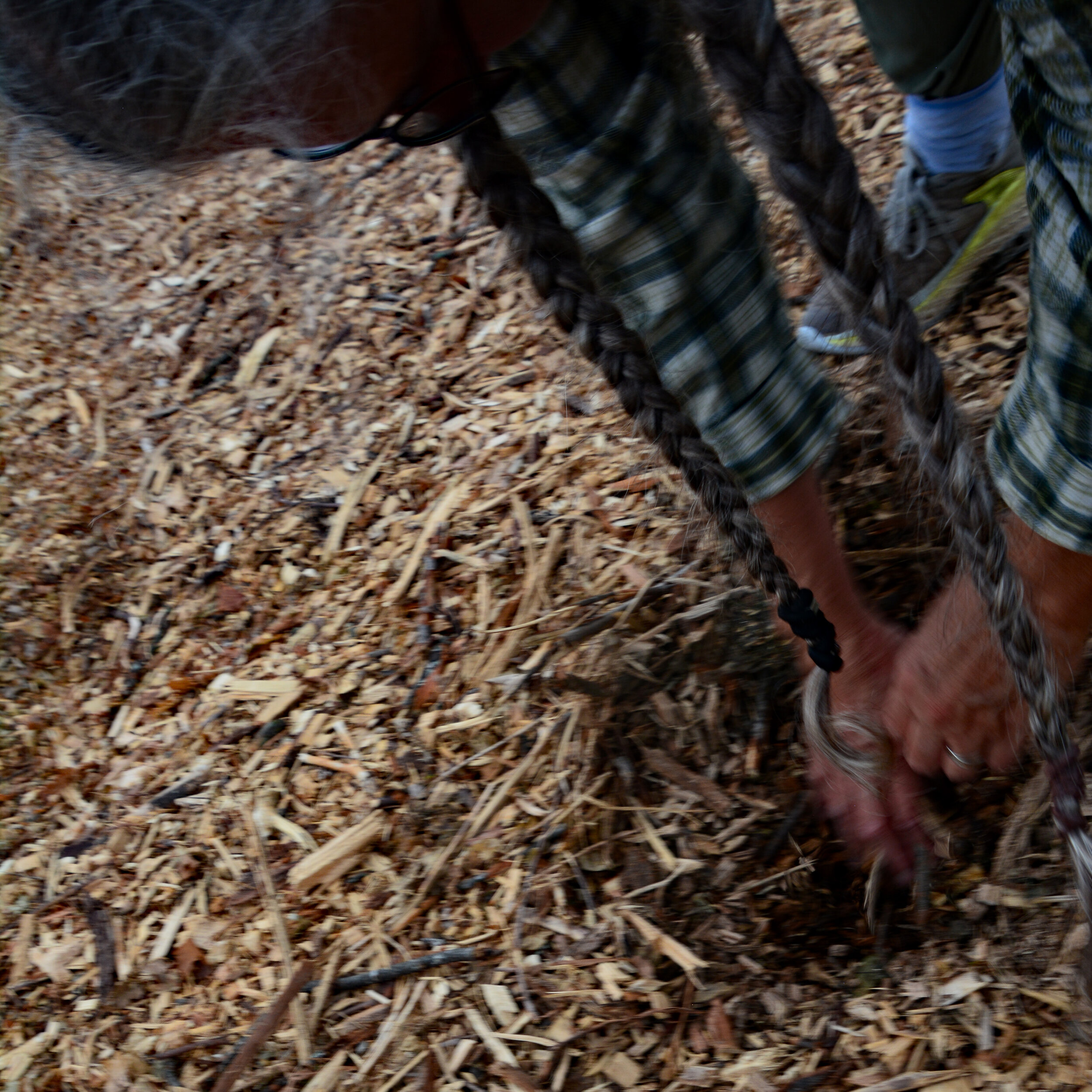Little Forest
The first time I walked on to Belle Island, I was disappointed. Initially pleased to find out that it was not a part of the former city dump, now Belle Park, I was still saddened to discover storm damaged trees, others with hollowed out bases and standing dead. Rotted stumps and decayed logs were scattered across the interior. Invasive buckthorns and honeysuckles filled in the spaces. Incomplete and muddy paths couldn’t even get me around the island. As quick as I was on the island, I was off.
But the forest had a captivating presence. I went back, connecting path fragments, crossing lush meadows and boggy bowls. The more I hiked, the more I saw.
Eventually the island revealed stands of mature oaks dotted with hickories, maples and basswood. The trees were in a multi-layered canopy with trunks of varying diameters, suggestive of an old growth forest. Crawling around the logs, I found an abundance of scurrying beetles, strange fungi and colourful slime molds. While birds ruled the canopy, squirrels, chipmunks and rabbits charged across the fertile forest floor. Like the tree canopy opening up to invite saplings to reach for the life-giving sun, I returned again and again and found nourishment.
Last year, in the first year of the pandemic, being laid off from work, I was left with time on my hands. I knew exactly what I would do. I would thoroughly explore the island. Taking binoculars, hand lens, camera, I identified as many birds, bugs and fungi as I could and uploaded my findings to a citizen science website. I traded an urban world for the natural, finding not only a rich forest community, but also a vibrant community of fellow walkers, caretakers and nature noticers. Eventually I logged over 500 species. The diversity on the island is staggering. The integration of species through competition and cooperation has become a portal through which to view climate change and find hope. It occurred to me that this was not a forest of neglect but of succession over hundreds, perhaps thousands, of years. At only 12 hectares Belle Island is a little forest with a huge task.
That succession was not in isolation from human life. Excavations in the late eighties unearthed human remains and artifacts dating back over a thousand years, confirming Belle Island as an Indigenous fishing and hunting ground. And the Indigenous presence is not just historical. In 2016 Travis Canadien began what would become yearly clean-up operations bringing out truckloads of garbage. The removal of garbage, the reduction of illegal camping and other destructive activities has led to a quiet transformation of the island. I have also learned that laying sacred tobacco, drumming, singing and dance has been a continuing tradition on the island, a succession of ceremony over thousands of years. Old growth culture. Old growth forest. Uninterrupted human and tree roots.
Now another little forest is taking root.
On Highway 15 at the Indigenous Food Sovereignty Garden, on land that was cleared of forest for farmland a couple of hundred years ago, 300 square meters of ground are being prepared to receive tree and shrub saplings this fall. In total, 900 saplings across 49 species will form the nucleus of forest regeneration, contributing to air quality, species diversity, carbon sequestration and, most importantly, cultural renewal. A community renewing a forest memory. Aided by its big sister from across the river, by donated fungi, a handful of symbolic soil and eventually native species, this little forest will spread wide its roots. Maureen Buchanan, a grandmother and Anishinaabekwe, says roots run deep in the spiritual connection of a people to their land.
Last month, continuing long traditions, members of the Kingston Indigenous community gathered on Belle Island for ceremony, prayers, drumming and reflection in the midst of the revelation of the grievous and deep loss of so many children at residential schools across Canada. Today tears are sown in the forest for a harvest of healing one day. Two little forests, one from the past, the other from the future, sustaining those who sustain them.
— with thanks for teaching from Maureen Buchanan.


